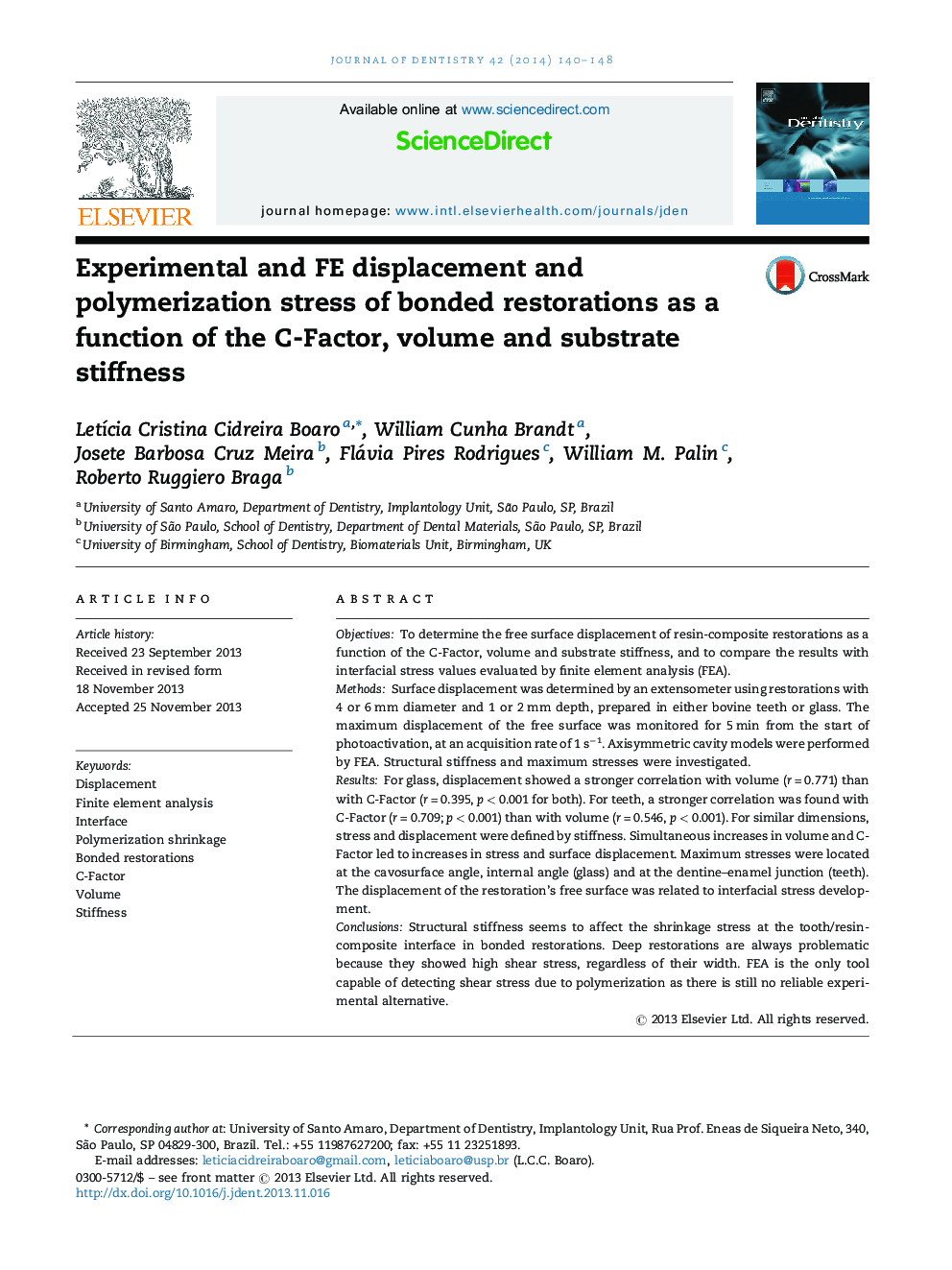| Article ID | Journal | Published Year | Pages | File Type |
|---|---|---|---|---|
| 3145514 | Journal of Dentistry | 2014 | 9 Pages |
ObjectivesTo determine the free surface displacement of resin-composite restorations as a function of the C-Factor, volume and substrate stiffness, and to compare the results with interfacial stress values evaluated by finite element analysis (FEA).MethodsSurface displacement was determined by an extensometer using restorations with 4 or 6 mm diameter and 1 or 2 mm depth, prepared in either bovine teeth or glass. The maximum displacement of the free surface was monitored for 5 min from the start of photoactivation, at an acquisition rate of 1 s−1. Axisymmetric cavity models were performed by FEA. Structural stiffness and maximum stresses were investigated.ResultsFor glass, displacement showed a stronger correlation with volume (r = 0.771) than with C-Factor (r = 0.395, p < 0.001 for both). For teeth, a stronger correlation was found with C-Factor (r = 0.709; p < 0.001) than with volume (r = 0.546, p < 0.001). For similar dimensions, stress and displacement were defined by stiffness. Simultaneous increases in volume and C-Factor led to increases in stress and surface displacement. Maximum stresses were located at the cavosurface angle, internal angle (glass) and at the dentine–enamel junction (teeth). The displacement of the restoration's free surface was related to interfacial stress development.ConclusionsStructural stiffness seems to affect the shrinkage stress at the tooth/resin-composite interface in bonded restorations. Deep restorations are always problematic because they showed high shear stress, regardless of their width. FEA is the only tool capable of detecting shear stress due to polymerization as there is still no reliable experimental alternative.
